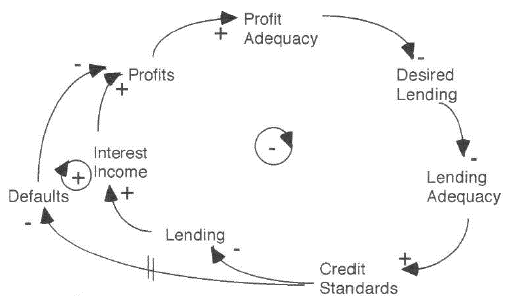Introduction
Complexity refers to a topic that many individuals intuitively comprehend. If more requirements or components are added, a system automatically becomes more complex. In the digital era, as internationalization and technology advances establish an ever-evolving world at a rapid pace, it is difficult not to see the effects of complexity. In spite of all this, dynamic complex is still less clear. It is hidden until the indicators reveal, and their cause remains unclear until their root diagnosis. However, for ideal intervention, diagnosis is usually late. Currently, the chance to find and react to dynamic complexity and thus, prevent adverse effects is limited in business.
Dynamic complexity is a detrimental property of a complex system whereby behaviorally determinant effects between its constituents evolve. The change is either due to internal events or external influences. The latter usually happens when a collection of constituents are emphasized enough to impact a dependent constituent (Senge, 2006). For example, a non-trivial force against a mechanical component or a limit or delay at some phase in the process. Dynamic complexity results in unanticipated effects that are hard to foresee from historical statistics since the quantity of states seems excessive for any particular collection of samples. Over any practical period, it always leads to a negative impact, for instance, time elongation, shortage, or loss, which causes side effects and inefficiencies. It is essential to understand that this phenomenon cannot be directly observed but its effect.
One needs to consider static understanding complexity to comprehend the difference between dynamic complexity and complexity. This refers to something countable, whereas dynamic is produced at unexpected moments through feedback, interdependencies, contentions, and enforcements. The latter is revealed via inflations, congestions, overhead, degradations, and strange behavior. Human thinking is often according to the linear models, static references, direct impacts, and two-dimensional movements. This reflects most of personal experiences (Balsalobre-Lorente et al., 2022). Exponential, dynamic, non-linear, multidimensional, as well as open systems prove to be a challenge to human comprehension. This is among the typical reasons that can coerce people to deal with more straightforward models instead of dynamic complexity and open systems. However, simplifying a system with dynamic traits into a closed-loop model is not a solution to the available problems.
Dynamic Complexity’s Role in the 2008 Financial Crisis
With a rise in frequency, governments, businesses, as well as economies are shocked by an abrupt manifestation of a past unidentified risk, for example, the 2008 financial crisis. The event forced countries into a situation they had not experienced in a long time (Zhang & Broadstock, 2020). In most instances, the unknown dangers result from dynamic complexity, which remains in hiding, similar to cancer, until indicators expose themselves. Usually, information about the risk reaches a late time it is hard to prevent a negative impact on business outcomes. This forces businesses to manage the dangers reactively (Balsalobre-Lorente et al., 2022). As business pace rises and decision windows become smaller, popular techniques of forecast and risk management are increasingly becoming inadequate. Real-time forecast while using historical reference models is not sufficient anymore. To attain better results, organizations must expose novel, dangerous behavior patterns with adequate time to take corrective measures and determine confidently which actions can yield the best outcome.

Conclusion
Even though many claimed that they knew the exact triggers of the 2008 financial crisis, they have failed to recognize the role dynamic complexity played in the event. Experts track the actual cause of intertwined fiscal domains, which produce significant dynamic complexity, making it hard to establish probable outcomes. The subprime foreclosure rate began the domino effect (Zhang & Broadstock, 2020). However, if the degree of inter-domain dependency had not existed, the impact felt on the market would be less.
References
Balsalobre-Lorente, D., Ibáñez-Luzón, L., Usman, M., & Shahbaz, M. (2022). The environmental Kuznets curve is based on the economic complexity and the pollution haven hypothesis in PIIGS countries. Renewable Energy, 185, 1441-1455. Web.
Senge, P. M. (2006). The fifth discipline: The art and practice of the learning organization. Broadway Business.
Zhang, D., & Broadstock, D. C. (2020). The global financial crisis and rising connectedness in the international commodity markets. International Review of Financial Analysis, 68, 7. Web.